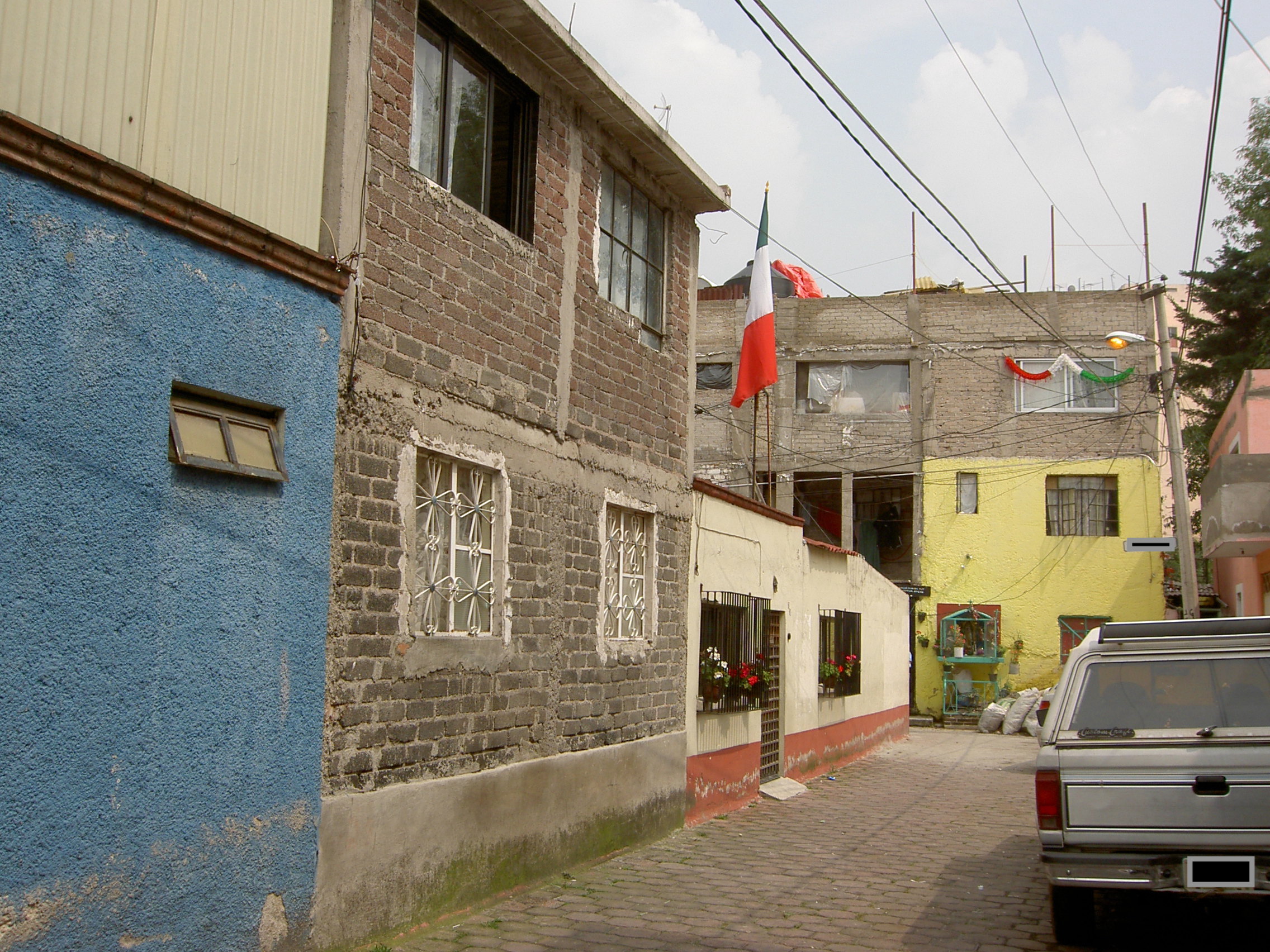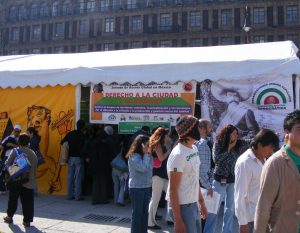Right to the City
Jill Wigle and Lorena Zárate
Jill Wigle is an Associate Professor in the Department of Geography and Environmental Studies at Carleton University in Ottawa. Her research focuses on access to land and housing, the geographies of spatial regulation, and the governance of informality in Mexico City.
Lorena Zárate is a founding member of the Global Platform for the Right to the City and currently co-coordinator of its support team, actively involved in the negotiation of the UN New Urban Agenda (2016). She is the former president of the Habitat International Coalition (2011–19) and was also the coordinator of the HIC-Latin America office (2003–11). During the past two decades, she has been involved in several international projects and multi-sectoral initiatives, including the elaboration and dissemination of the World Charter for the Right to the City (2005) and the Mexico City Charter for the Right to the City (2010).
Claiming the right to the city in Mexico City: From lived experience to mobilizing for change
The right to the city is a rallying slogan and movement for democratic, sustainable, and just cities around the world. It is also a multi-dimensional concept with the potential to unify different urban struggles. The term was coined by French academic Henri Lefebvre in a 1968 book by the same name (Le droit à la ville). Lefebvre described it as “a cry and a demand” for a city made by and for people, where the needs, rights, and aspirations of everyday life were prioritized over profit-making. Today, the concept is evoked in different ways by a range of social actors, from the United Nations to local governments to anti-capitalist activists. This text focuses on how the right to the city has been taken up and applied in Mexico City.
The way in which the concept is interpreted and put into action is undoubtedly influenced by political visions, lived experience, and urban context. In Latin America, the right to the city was first embraced by social movements in response to conditions of rapid urbanization, urban inequality, and opposition to authoritarian governments in the 1960s and 1970s. During this period, much of the urban growth in countries such as Mexico took place through incremental housing processes—the gradual construction of housing and neighbourhoods in consonance with household resources, community mobilization, and sometimes state support for urban services (i.e., electricity, water). The precarious nature of these settlement areas in the expanding peripheries of many Latin American cities, such as Mexico City, spurred residents and social movements to collectively oppose evictions, organize for better living conditions, claim the right to housing, and demand the right to participate in decisions concerning their neighbourhoods and cities.
Interestingly, what Lefebvre imagined as a city made by and for people in the late 1960s was already taking place in Latin America, albeit under arduous conditions of social struggle and collective resistance. Given this common lived experience, it is perhaps easier to understand why the right to the city resonated so strongly—and continues to resonate—with social movements in Latin America that mobilize for more just and democratic cities.
Most housing and urban space in Latin America continues to be produced in this way, creating a “city always in the making” (Caldeira, 2017, p. 5) (see Figure 1). For example, over half of the built-up area of Mexico City is produced through incremental housing and settlement processes. In Spanish, this is referred to as la producción social del habitat (the social production of habitat). The social production of habitat emphasizes inhabitant-led strategies and practices to produce and manage housing, services, and infrastructure. It also emphasizes the social function of housing (i.e., housing for people, not for profit) and urban land (i.e., public community facilities, not privatized spaces) as well as the importance of participatory and democratic decision-making processes in producing neighbourhoods and claiming the right to the city (Ortiz Flores, 2012). The social production of habitat is also integral to how the right to the city concept has been mobilized for change in Mexico City, although other important elements are also involved.

As a concept, the right to the city started to gain greater attention after being featured at several high-profile events at World Social Forums in Brazil in the early 2000s. These forums were designed to counter the market-first focus of the annual World Economic Forums held in Davos, Switzerland. Regional forums in countries such as Brazil, Ecuador, and Mexico have helped to disseminate the concept both in Latin America and internationally. For example, when Mexico City hosted the 2008 World Social Forum, local activists organized a tent on the “right to the city and habitat” (see Figure 2). This organizing work helped to launch the Mexico City Charter for the Right to the City (2010), an initiative led by social movement proponents and signed by the mayor of the city at the time. The struggle to realize the aspirational content of the Charter—with its emphasis on the social production of habitat—is ongoing. This draws our attention back to the fact that the transformative potential and meaning of the right to the city remains anchored in the work of social movements that advocate for more just and democratic cities.

Discussion Questions
- What are three pressing social issues in your city that relate to the right to the city?
- Find an image that helps you to explain some key element(s) of the right to the city. How would you caption or describe this photo in an essay?
- What would need to change in your city to realize more fully the right to the city? As you contemplate these changes, consider for whom they would have the greatest impact.
Additional Resources
Caffé, C. (2016). Two Worlds, One City. #SupportRight2City Campaign in the New Urban Agenda. São Paulo:Global Platform for the Right to the City. https://youtu.be/a9rjlRXt4UY
Canadian Centre for Policy Alternatives (2019). “The Right to the City.” The Monitor, January-February. https://www.policyalternatives.ca/publications/monitor/monitor-januaryfebruary-2019
Harvey, D. (2012). “The Right to the City”. In D. Harvey, Rebel Cities. From the Right to the City to the Urban Revolution (pp. 3-25). London: Verso.
Sugranyes, A. & Mathivet, C. (Eds.) (2011). Cities for All. Proposals and Experiences towards the Right to the City. Santiago de Chile: Habitat International Coalition.
Wigle, J. & Zárate, L. (2010). “Mexico City creates a Charter for the Right to the City.” Progressive Planning, 184, 13-16. http://www.plannersnetwork.org/2010/07/mexico-city-creates-charter-for-the-right-to-the-city/
References
Caldeira, T. (2017). Peripheral urbanization: Autoconstruction, transversal logics, and politics in cities of the global south. Environment and Planning D: Society and Space, 35(1), 3-20.
Ortiz Flores, E. (2012). Producción social de la vivienda y el hábitat. Bases conceptuales y correlación con los procesos habitacionales. Ciudad de México: Habitat International Coalition-América Latina.

